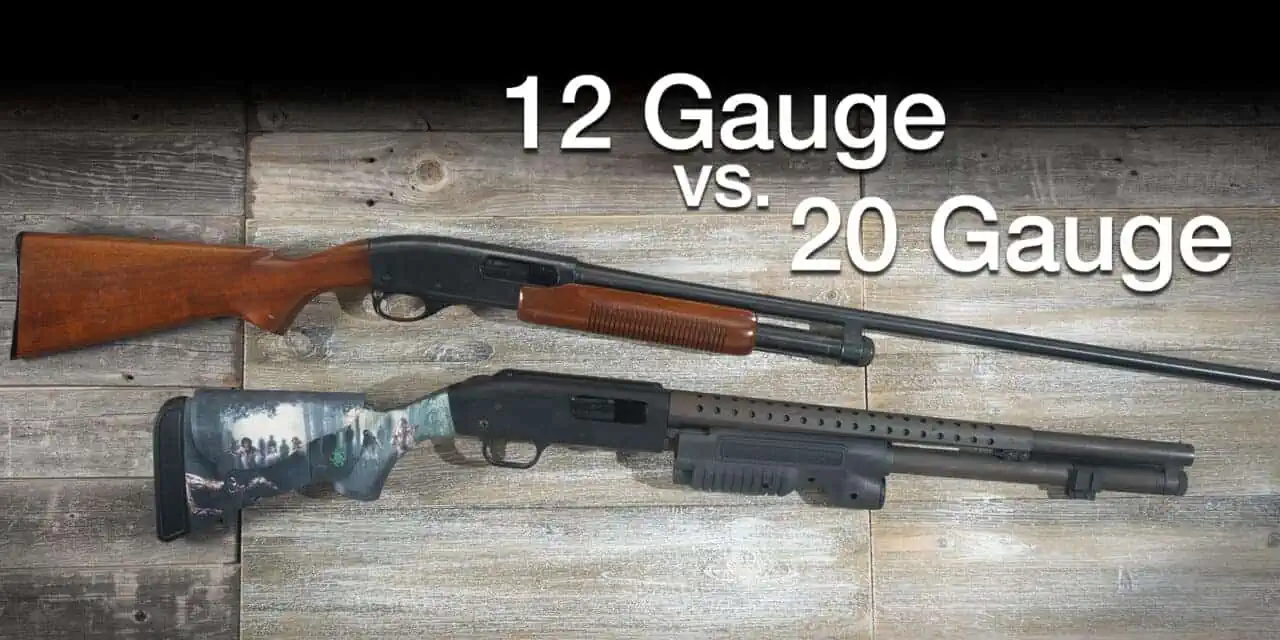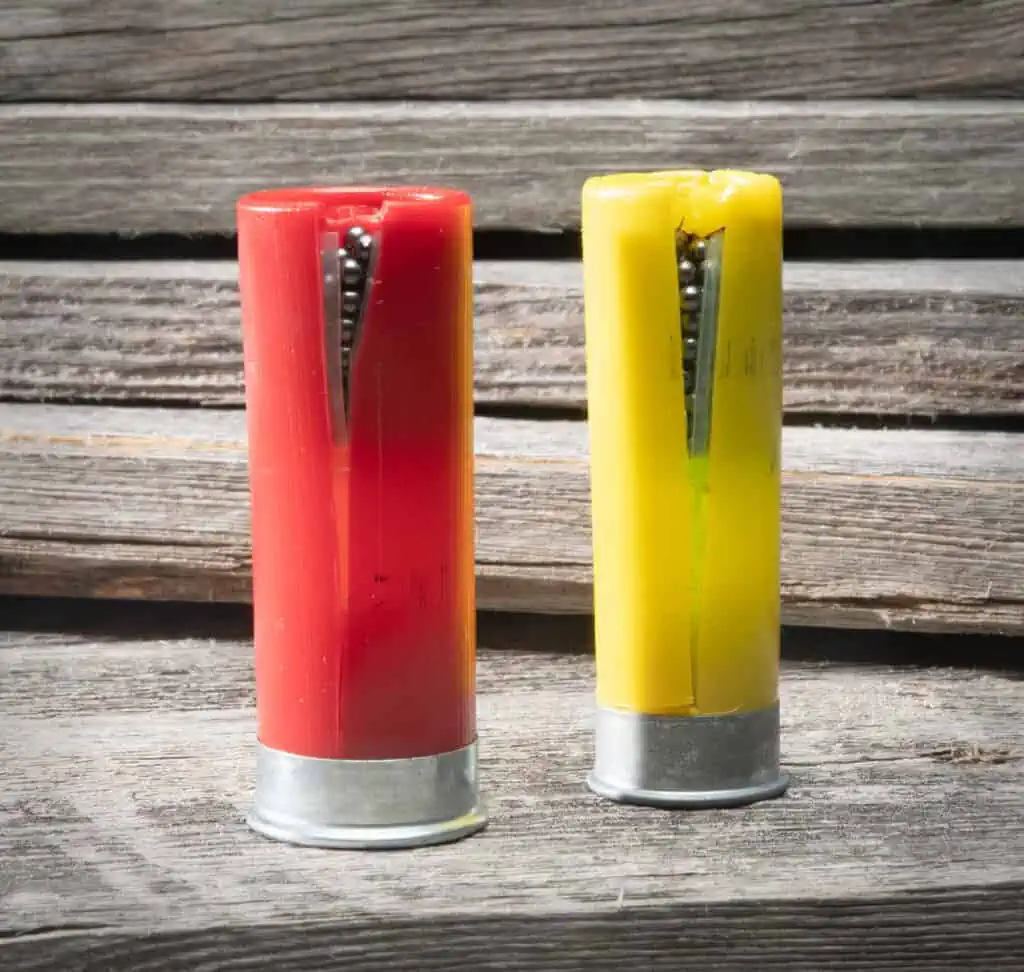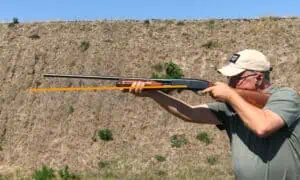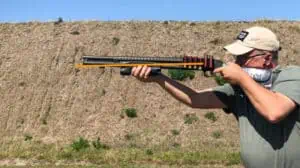Testing 12 Gauge vs 20 Gauge
When we talk about guns, we usually also talk about what caliber of ammunition they shoot. When we talk about shotguns, however, we talk about what gauge of ammunition they use. Most of us understand the difference in power between, say, a 22 Long Rifle cartridge and a round of 9mm Luger. What isn’t as clear to some people, though, is the difference between the gauges of a shotgun. What are the practical differences with 12 gauge vs. 20 gauge, and how might those differences affect you?
Let’s start out with what we mean by “gauge.” Describing a round of centerfire rifle or pistol ammunition is pretty easy. Almost all centerfire cartridges are described in terms of the shell which holds the powder and primer or by the diameter of the bullet they fire. For instance, 9mm rounds use a 9mm x 19mm shell casing, and a .45 ACP is (you guessed it) .45 inches across.
Shotgun rounds, however, are measured in gauges, which is a completely different unit of measurement. Gauge is based on the diameter of a one-pound ball of lead. A one-pound ball of lead would fit perfectly into the barrel of a one gauge shotgun. A 4 gauge shotgun would have an inside barrel diameter the same size as a ball of lead that weighs ¼ of a pound. Therefore, a 12 gauge shotgun has a barrel diameter of a lead ball weighing 1/12 of a pound. A 20 gauge barrel is the same size as a ball of lead weighing 1/20th of a pound.
The Power of 12 Gauge vs 20 Gauge
What actually gets sent downrange is a function of the shot size. In general, the lower the number, the smaller the diameter of each shot pellet. #12 snake shot is a tiny little pellet that’s just 0.05 of an inch in diameter. Each pellet of 00 buckshot, on the other hand, is ⅓ of an inch diameter. Not surprisingly, there are more pellets of shot inside of #12 shotshell than there are inside a round of #00 buck. This has two effects. Each pellet of buckshot is going to hit with more force, but there will be fewer pellets flying downrange to hit the target. With smaller shot sizes, like #7 ½, there are many more pellets, but each of them has far less momentum than a larger pellet would have.
With that out of the way, let’s talk about the actual payload inside each round of 12 gauge ammo vs. 20 gauge ammunition. We’ll be opening up a round of 12 gauge Winchester Universal #7½ birdshot. We’ll compare it to the weight of the shot inside a round 20 gauge Winchester Universal #7 ½ birdshot.
12 Gauge #7½: Total shot weight: 496.5 grains
20 Gauge #7½: Total shot weigh: 378 grains
The 12 gauge 12 Gauge #7½ had an average muzzle velocity of 1140 fps when shot from our 18” barrel Mossberg 500 test gun. To test the 20 gauge ammo, we used a Remington 870 Wingmaster Express with a 24” barrel. The average velocity of the 12 gauge shells was 1140 fps, and the shells from the slightly longer 20 gauge shotgun was 1269 fps.
Let’s Talk With Some Shotgun Experts
This, in turn, means that the #7½ shot from the 12 gauge shotgun produced 1433 foot pounds of muzzle energy. The 20 gauge #7½ shot, on the other hand had a muzzle energy of 1352 foot pounds. This doesn’t seem like much, but the Mossberg we used weighs 8.8 pounds. The Remington, with its longer barrel, weighs 6.7 pounds. The higher weight (on average) of a 12 gauge vs 20 gauge shotguns helps tame recoil, and suddenly many of the advantages of a smaller shotgun seem to fade away.
To get a better understanding of how the differences of 12 gauge vs 20 gauge play out in the real world, I reached out to Tim Chandler and Ashton Ray of 360 Performance Shooting. Tim and Ashton are acknowledged experts in the defensive shotgun, and Ashton also has extensive experience hunting with a shotgun.
“People think that a 20 gauge shotgun is going to be significantly easier to manage under recoil than a larger 12 gauge round,” said Chandler. “The fact is, though, that 20 gauge is only marginally smaller, and it’s moving at about the same velocity. This means that the recoil energy moving backwards is going to be the same,” Chandler said. “What makes that even worse is that 20 gauge shotguns tend to be significantly smaller than comparable 12 gauge shotguns. So now you’ve got nearly the same amount of muzzle energy flying out of the front of the shotgun, trying to control it with a lighter weight gun.”
20 Gauge Is Smaller, So It’s Easier To Shoot, Right? RIGHT?
“To make matters even worse, many people buy 20 gauge shotguns because they’re smaller in stature, and they think that there’s a vast difference in recoil with 12 gauge vs. 20 gauge. So now we have smaller people shooting smaller guns, and the shells those guns shoot are almost as powerful as a 12 gauge shell. They’ve made a bad situation even worse.”
One of the best things about shotguns is how they are useful in so many situations. You can use them for hunting to the clay sports to self defense. Both Ashton Ray and Tim Chandler had thoughts on how 12 gauge fares versus 20 gauge in each of those areas.
“There are a lot of advantages to a 20 gauge shotgun as a hunting gun over a 12 gauge,” Ray said. “They tend to be smaller and lighter, so that means they’re easy to carry around all day in the field. They throw a similar amount of lead downrange using birdshot, so their effectiveness as a hunting gun is almost the same as a 12 gauge shotgun. Things change, however, when you look at 12 gauge vs. 20 gauge in a defensive situation.”
The Defensive Uses Of Each Gauge
“For starters,” Ray continued, “the technology in defensive shotguns is driven primarily by law enforcement, and law enforcement uses 12 gauge shotguns. This means that the latest and most-effective developments are applied to 12 gauge shotguns and 12 gauge ammunition. Recent innovations, like Federal FliteControl buckshot, are available only in 12 gauge. As a result, 20 gauge shotguns lag significantly behind 12 gauge shotguns when it comes to potential upgrades for defensive uses.”
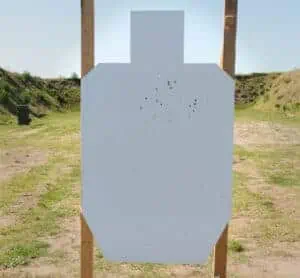 “The difference in ammunition between 12 gauge vs 20 gauge isn’t as important in a hunting scenario as it is in a defensive scenario,” Chandler said. “In hunting, no matter if it’s buckshot with a deer or birdshot with a quail, you want enough pellets to hit the target and bring it down in an ethical manner. What happens to the rest of pellets isn’t that important. If you’re hunting safely, paying attention to your backstop, you can afford to miss with some or even most of the pellets.”
“The difference in ammunition between 12 gauge vs 20 gauge isn’t as important in a hunting scenario as it is in a defensive scenario,” Chandler said. “In hunting, no matter if it’s buckshot with a deer or birdshot with a quail, you want enough pellets to hit the target and bring it down in an ethical manner. What happens to the rest of pellets isn’t that important. If you’re hunting safely, paying attention to your backstop, you can afford to miss with some or even most of the pellets.”
“This is not true in a defensive or law enforcement use of a shotgun,” Chandler went on to say. “In those situations, every pellet has to hit its intended target, or else it’d be just like missing your rifle or pistol, and you’d be responsible for any havoc those pellets might cause. Good defensive ammo, with tight patterns that stay on target, is far more common for 12 gauge vs. 20 gauge. This is another reason why both Ashton and I really prefer the 12 gauge for any kind of defensive usage.”
Taking 12 Gauge vs 20 Gauge To The Range
We took our test guns to the range to see what the differences between a 12 gauge vs 20 gauge shotgun would be in a defensive situation. We set up a target at 10 yards, and then shot at it with Winchester Super-X 20 gauge #3 buckshot and Federal FliteControl #00 8 pellet buckshot in the 12 gauge Mossberg. Both shotguns are smoothbore guns so choke selection won’t impact the shot pattern.
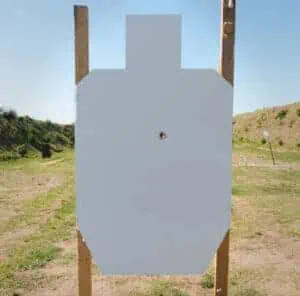 The results proved interesting. The 12 gauge FliteControl buckshot stayed together and punched a tight hole in the target. The 20 gauge buckshot, on the other hand, opened up significantly, even at 10 yards. At longer ranges, there is a very good chance that one or more pellets would miss the target, with potentially catastrophic results.
The results proved interesting. The 12 gauge FliteControl buckshot stayed together and punched a tight hole in the target. The 20 gauge buckshot, on the other hand, opened up significantly, even at 10 yards. At longer ranges, there is a very good chance that one or more pellets would miss the target, with potentially catastrophic results.
So which is the better choice in the 12 gauge vs. 20 gauge battle? Well, it all depends on what you want to do with your gun. The 20 gauge 870 we used in our tests is my field hunting gun. I’ve taken it out on a quest in the pine forests of Arizona. There, I really appreciated the light weight of the gun as we spent an afternoon in the outdoors pursuing our prey.
On the other hand, the 12 gauge shotgun is the established leader in the tactical shotgun world. It’s also is a very useful hunting tool. The wide choice of ammunition available for 12 gauge shotguns and the almost limitless variety of shotguns available that shoot this ammunition means it’s the most popular type of shotgun shell in the world. Unless the lighter weight of the 20 gauge is your priority, the 12 gauge shotgun is probably your better choice.

